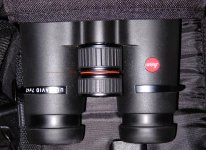I've cleaned a lot of waterproof roofs this way and not had a failure yet. Because its so much easier and so much less likely to damage the glass with running water and perhaps a clean wet fingertip.
I just cleaned a Chinese ED (Hawke) with a big sap-like splat on the objective in this way.
I think your excess caution for (especially for roofs) is, err, how do I say this without causing offense, a little "unwise, ill-advised, foolish, stark staring bonkers"

When people make JIS7 (immersion proof to shallow depth) bins and warranty them for it there is no risk to the consumer. The bin is waterproof or if it isn't it goes back.
For waterproof porros I won't immerse them but I do rely on their lens seals and water clean the objectives and the eyepieces. Again without incident.







